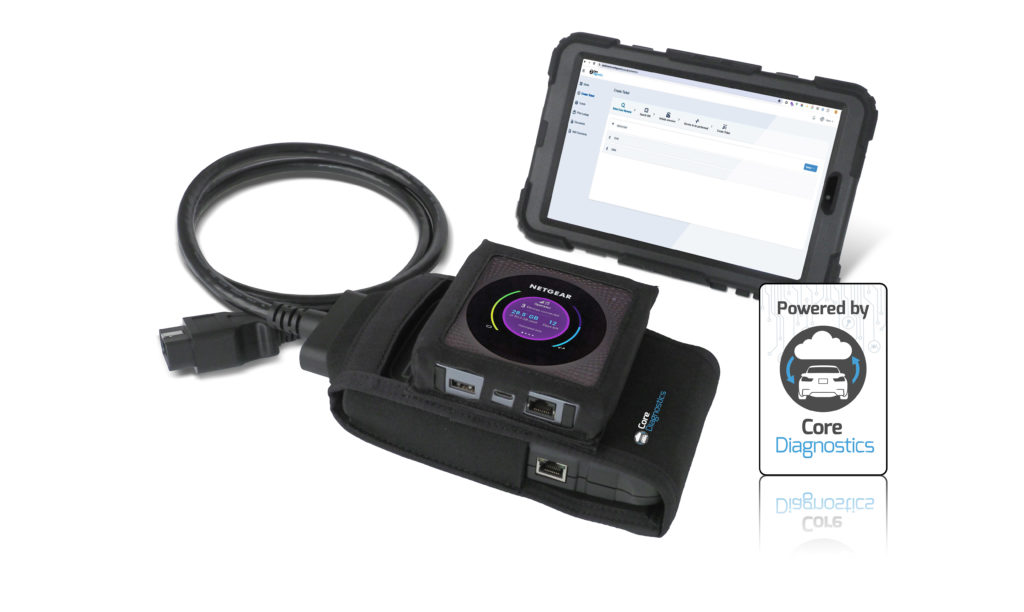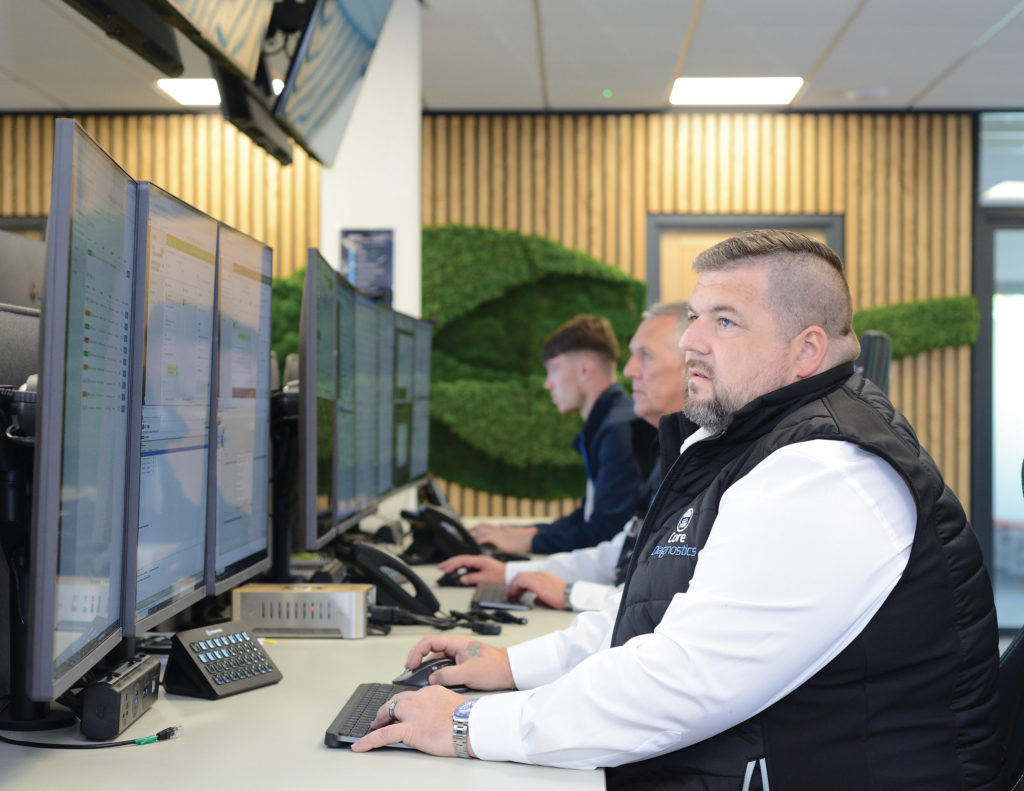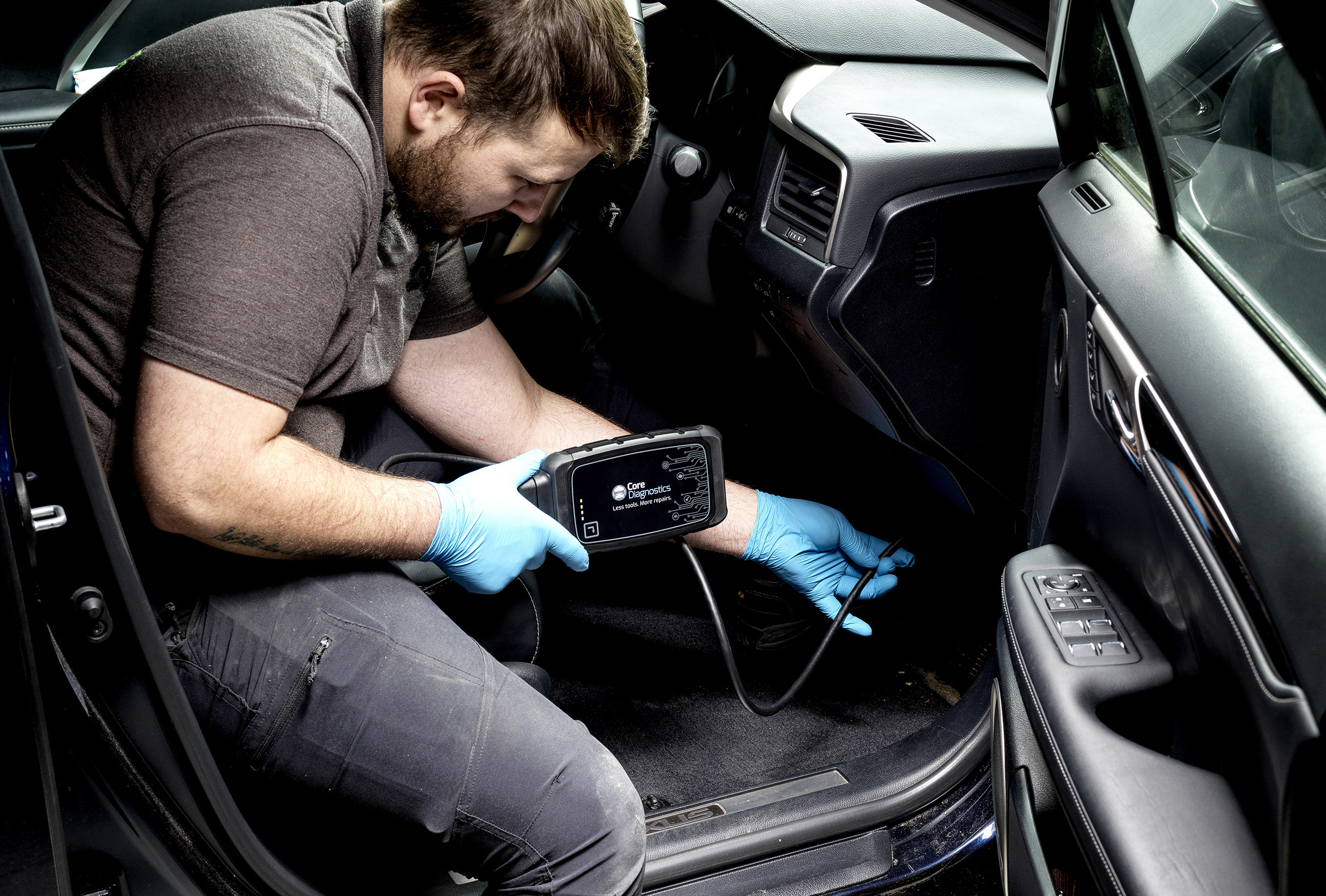Remote diagnostics has become a valuable workshop tool that can help technicians to overcome many service and repair challenges. But how can workshops ensure they choose the right remote diagnostics partner in order to maximise the benefits of this cutting-edge technology? Neil Hilton, Technical Director for Core Diagnostics explains.
Less than fifteen years ago, the idea of being able to carry out repairs on a vehicle that could be in another town, country – or even on another continent – might have seemed far-fetched. However, in today’s super-connected world where many of us send and receive many megabytes of data across continents each and every day, often without even realising it, remote diagnostics is now a reality that’s bringing enormous benefits to the service and repair sector.
“As we know, there’s been a massive evolution in the automotive industry in the last twenty years with the proliferation of increasingly sophisticated electronic vehicle systems” says Neil.
“Today, workshops typically have to invest in an array of diagnostic tools to ensure wide coverage of the vehicle parc, as well as specialist ADAS calibration equipment, and of course they have to know how to use it. Even then, there are many coding and programming procedures on common vehicle brands that can only be carried out with the OE diagnostic tool, for example ECU Flash Updates that a manufacturer has released to resolve issues or a Mercedes Headlamp that requires coding to the vehicle.
Remote diagnostics can be the perfect solution, as it allows a wide range of diagnostic, coding or programming tasks – and even ADAS calibrations – to be outsourced. But rather than waiting for a mobile auto electrician or third party repairer to turn up in a van, workshops who use remote diagnostics can simply plug the remote interface in to the vehicle’s OBD port, allowing remote repairs to be carried out by a qualified technician based at our technical centre. What’s more, with our Core Remote Ultimate, which is supplied with a Netgear high speed mobile Wi-Fi router, the remote interface doesn’t even need to be connected to the workshop’s Wi-Fi connection, also making it ideal for roadside repairs or dynamic ADAS calibrations.

Choosing the right partner for remote diagnostics
However, while remote repair technology can offer huge benefits Neil believes that there are wide variations in the service levels and capabilities of many remote diagnostic providers.
“While most remote diagnostics companies use a similar remote interface to be able to establish a remote connection with the vehicle, that’s often where the similarities end. So, it’s advisable to do your research and ask the right questions when choosing a remote diagnostics provider to ensure the one you choose will best suit your needs and expectations” says Neil.
“Smaller remote diagnostic providers may only have one or two in-house support technicians – though some do not have any. Either they will quickly reach the limit of the number of jobs that they can work on simultaneously or they will outsource some or all of the jobs they receive to a larger technical centre like ours. This means that their customers will frequently face long waiting times or support queues, which can be very frustrating for the workshops as it will slow down their workflow.
Server capacity is the other side of the same coin. Remote programming requires a large amount of server capacity and significant extra bandwidth is needed to be able to work on multiple vehicles at the same time. The IT hardware required to provide the capacity to do this is a costly investment that few remote diagnostic companies can afford to make. The result is the same – either more work has to be outsourced, or the customer has to wait in a support queue until their job is allocated and dealt with.
This is why at Core Diagnostics we have a large in-house team of highly-trained remote technicians – who incidentally are the only ones in the UK with the IMI’s Remote Technician accreditation, a course we developed in partnership with the IMI – and our team includes auto electricians and auto locksmiths, as well as qualified specialists in ADAS and EVs.

We’ve also made a huge investment in IT infrastructure that gives us significant spare capacity to support our continued growth for several years to come and visitors to our technical centre are always impressed by the amount of technology that we have at our disposal.
This ongoing investment in people, training and technology has enabled us to make a clear commitment to our customers that all support requests will be answered in less than 30 seconds, and they’ll never experience frustrating waiting times or support queues” says Neil.
“But this isn’t the only issue when remote diagnostics companies rely on outsourcing. That business model comes with other risks too” Neil explains. “If a programming or coding procedure is carried out incorrectly and leads to the failure of a part – such as an ECU, for example – where does the responsibility lie? From the end-user’s perspective it would be with the workshop, who would have to have to make a claim against the remote diagnostic provider to recover any costs. However, this could be a lengthy process and meanwhile the workshop is left to appease the customer. After all it’s their reputation that’s on the line.”
Coverage of the vehicle parc is another important issue, according to Neil.
“It’s vital to know which vehicle brands your remote partner has the capability to repair in-house before signing up” says Neil. “Coverage of vehicle brands can vary significantly between remote diagnostic providers. Many programming tasks require the OE diagnostic tool and very few remote service providers have all of the tools in-house that are necessary to ensure wide vehicle parc coverage. To avoid outsourcing our support jobs we continually invest in the OE tools. Take BYD as an example: we recognised some time ago that the Chinese EV brand was growing rapidly and as soon as BYD franchises began to open in the UK we invested in the OE diagnostic equipment. Currently we cover 66 vehicle brands and counting, all of which we have the capability to support in-house.
Value-added matters
Vehicle brand coverage and service levels are the most critical things to look for when choosing a remote diagnostics partner” says Neil. “But as with any service provider, value-added extras that offer other benefits – such as improved convenience – shouldn’t be ignored” he adds.
“By using technology to our advantage there are many aspects of our service that we’ve been able to automate, which has ultimately brought additional advantages for our customers” Neil explains.
“For example, we implemented an automated billing system and an online, self-service customer portal where documents such as ADAS calibration reports and copy invoices can be accessed 24/7. Automating some of these administrative tasks enables us to invest more where it will add the most value – in recruiting and training more remote technicians, acquiring the latest OE tools and investing in the IT infrastructure and bandwidth necessary to work on hundreds of support jobs at the same time.
“Remote diagnostics has been a game-changer and can greatly improve workshop productivity, resulting in faster key-to-key times, but only if technicians can access the service quickly, easily and get the support they need to get the job done” says Neil.
For more information call Core Diagnostics on 0151 559 3940 or email sales@corediagnostics.co.uk
